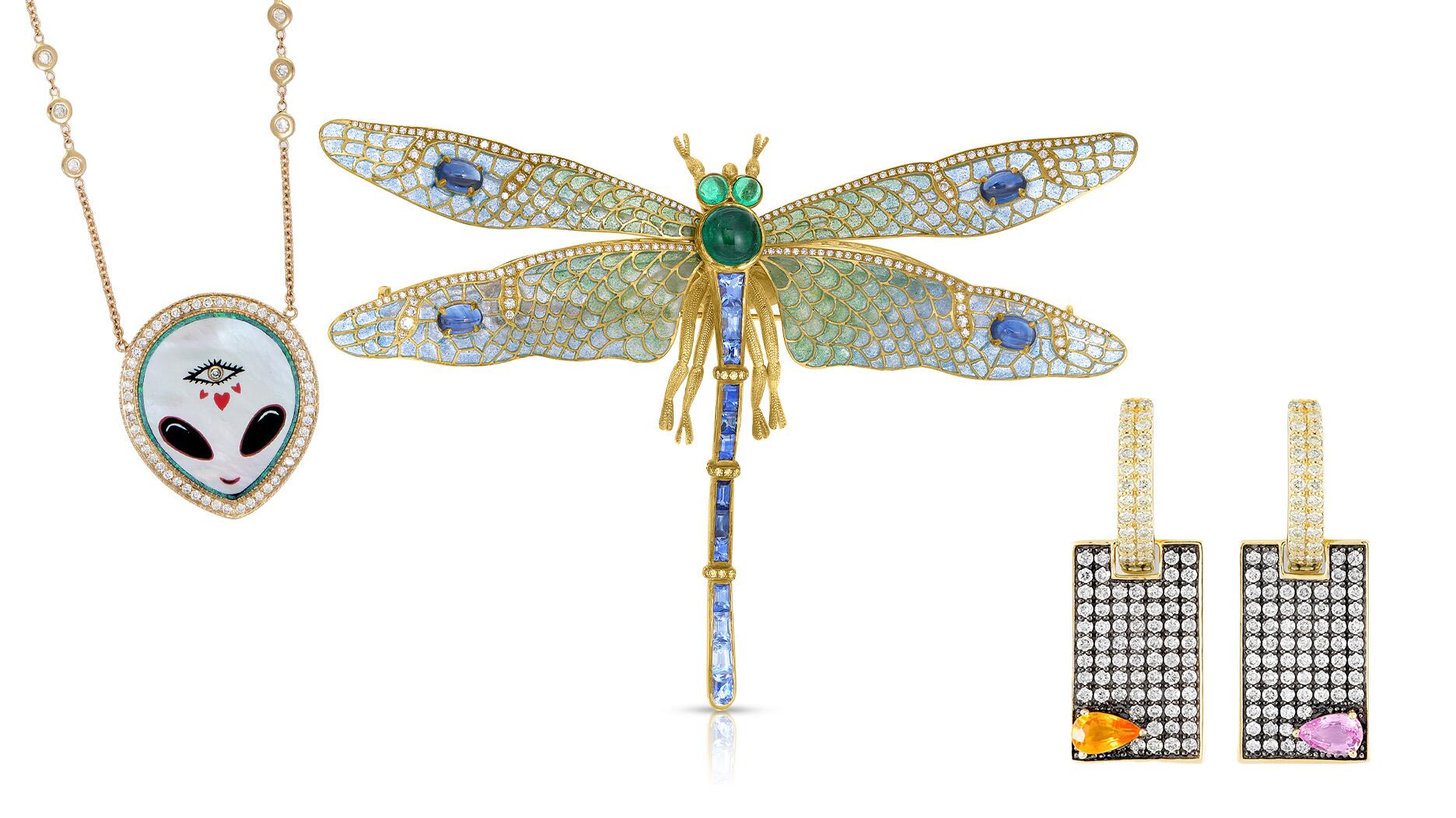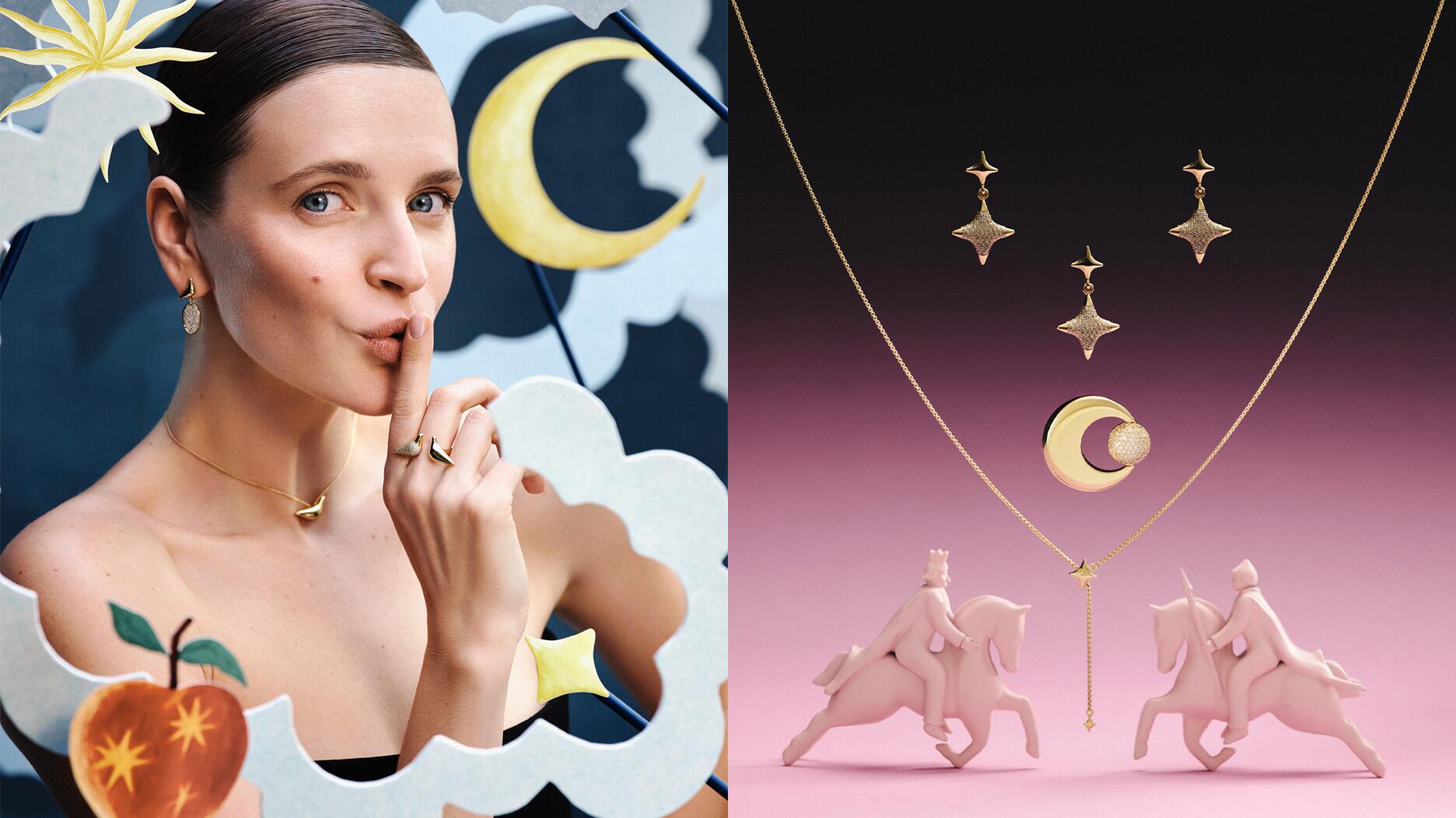At Vicenzaoro, Paola De Luca Gazes Into Jewelry’s Future
The trend forecaster and her guests explored unconventional jewelry designs, NFTs, AI art, and more during her Trendvision presentation.

On Saturday at the show, De Luca moderated the “Dreamscapes” presentation, welcoming several industry experts to the stage to discuss the latest in jewelry technology and innovation.
“Dreamscapes is about escaping reality through the digital era but also getting inspired,” she said. “We are at the cusp. We have entered a new era of imagination.”
The session began with a look back at her own career and her path to trend forecasting.
De Luca recalled living in New York in the 1990s and how the subcultures of the time would influence the fashion world, but on a delay.
“The subcultures I would see in my nightlife would show up in Vogue or the big magazines a year later. And I was like, ‘how can I connect that?’” she said. “Everything is synergic. There is no line between us and the street.”
This is what her guests had to say about the current state of jewelry and how technology will shape the industry’s future.
One hundred years later, Surrealism makes a comeback.
First to the stage were Bella Neyman and JB Jones, co-founders of New York City Jewelry Week.
To better understand the innovation of the present day and the future, Neyman and Jones walked the audience through jewelry history.

The pair’s segment focused on Surrealist artists, like Salvador Dalí and Man Ray, and the wearable art of the early 20th century.
The Surrealist movement emphasized the power of imagination and the unconscious, and its artists reimagined everyday objects in interesting ways, a theme that can be seen mirrored in the present state of jewelry, said Neyman.
She highlighted Man Ray’s lampshade earrings and Dalí’s ruby lips brooch, which turned the everyday into elevated jewelry.
The Surrealist movement was born around 1920 in the aftermath of World War I.
This period in jewelry history, said De Luca, mirrors the present day, noting the similar social and political shifts, like the war in Ukraine and an economic crisis, as well as industrial changes and emerging technologies.
Just about 100 years later, Jones gave insight into how history is repeating itself in the current crop of jewelry designers.
“Today, we see what’s happening as a result of the work-from-home shift and a growing interest in virtual and digital design. The growth of Web3, the metaverse, NFTs, and all of that is combining to create a new reality in the jewelry world. And we see that playing out in design, materials, and marketing,” she said.
Jones said this emerging technology, like the Surrealist movement, begs the question, what is real?
She noted the rise in the use of unconventional materials, like plastic rings by London-based designer Milli Welch or Boucheron’s “Holographique” high jewelry collection, which gave rock crystal a holographic effect by spraying the stone with precious metal microparticles at a high temperature.
On the NFT front, she highlighted the “Cosmic Craving” NFT by diamond artist Reena Ahluwalia and Simone Faurschou’s “Blockchain” collection, which pairs its 18-karat gold necklaces with an NFT.
“It really is the combination of these worlds that is making the dreamscape now a reality,” said Jones.
Jewelry renderings, a powerful storytelling tool, have gone high tech.
Graphic designer Barbara Brocchi took the stage next, sharing her experience as an illustrator working with brands like Bulgari and using both traditional and digital design.
Brocchi spoke about the importance of storytelling and how she helps brands do just that via illustration, sharing the process of how a piece of jewelry comes to be, sketching it each step of the way.
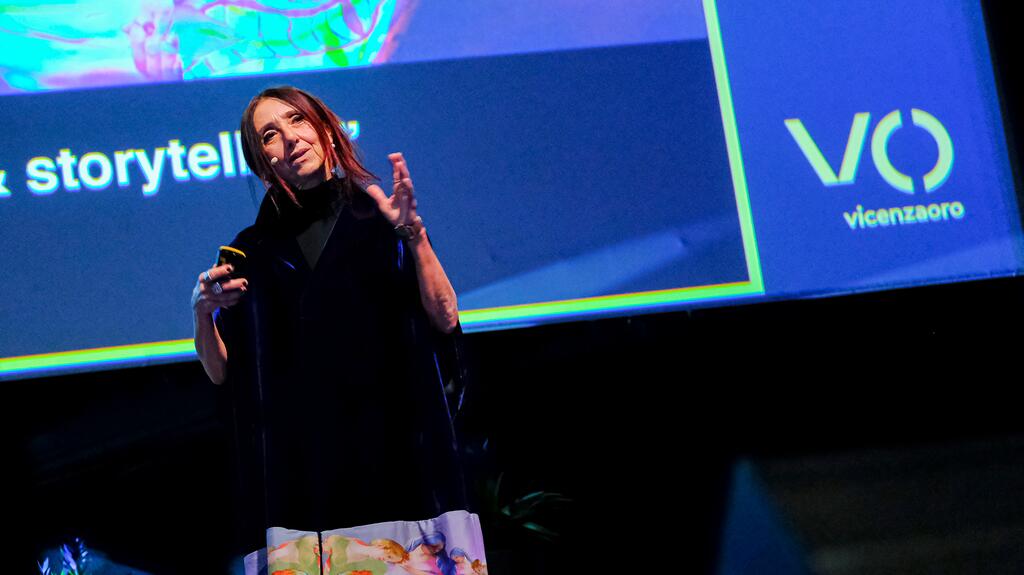
While a photograph can only show the finished product, a jewelry rendering gives a better understanding of a jewel’s creation.
It shows the full magic, said Brocchi, and brings customers along on the journey.
That process of turning a dream into a physical piece, that is what the customer wants, said De Luca.
“You’re not only sketching. You’re using digital effects to present and communicate what the piece is about,” she added.
Gen Z jewelers are flipping the script.
Jewelry designer Wallis Hong was the next presenter, praised by De Luca as the “emerging talent” of the moment.
Gen Z, of which Hong is a member, is bringing new values to the table, she said, like gender fluidity, cultural osmosis, and “phygital” reality.
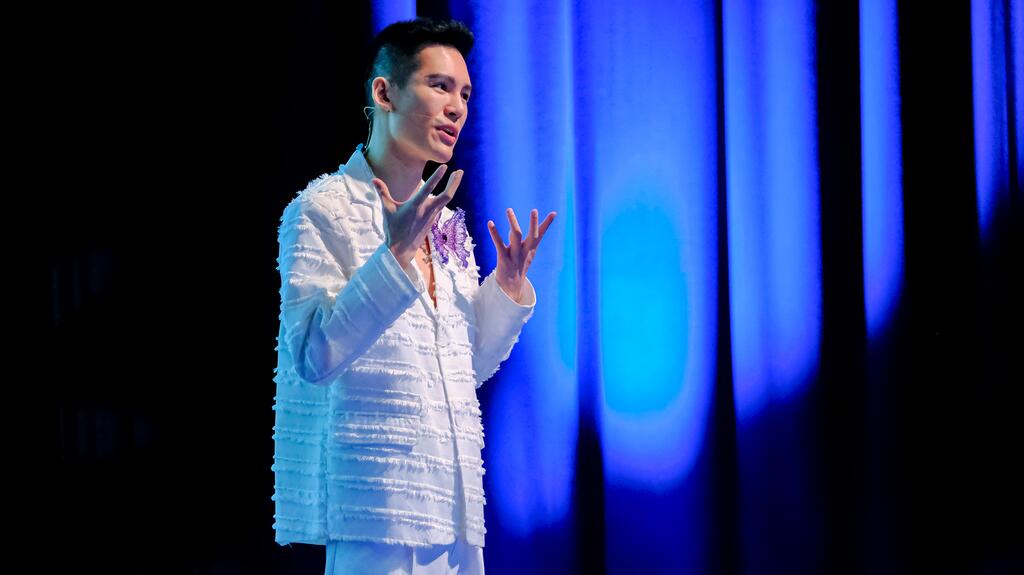
Hong uses unconventional materials like titanium, a callback to a point Jones made during her segment.
Born in China, Hong now lives in Spain, and takes inspiration from famed French jeweler René Lalique (1860-1945), a prime example of the mixing of cultures noted by De Luca.
Inspired by nature and the Art Nouveau moment, he creates big and bold jewels, bringing a new twist to common art subjects, like butterflies and marine life.
“I want to make the type of jewelry that people have different connections to, that you may see as a coral and other people may see it as a water butterfly,” explained Hong.
AI art could revolutionize the luxury industry.
The last guest to the stage was Ferdi Alici, founder of OUCHHH Studio, a media company that combines art and science by creating data paintings and sculptures.
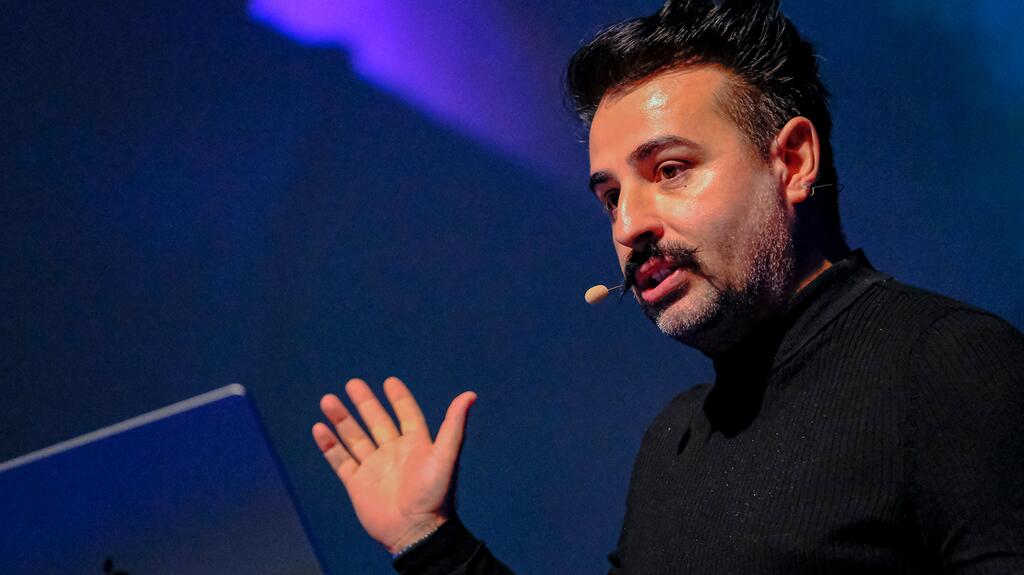
The company partnered with Bulgari to celebrate the 10th anniversary of its “Octo” watch, projecting a digital art display on the front of the Pantheon in Rome. The orchestra of the Santa Cecilia Academy accompanied the show.
The studio collected data related to the history of Italian architecture and combined that with the conductor’s brainwaves, monitored via a NeuroSky MindWave EEG headset capable of tracking his alpha and gamma waves and other aspects of his mental state, like attention and stress levels.
That info was sent through a data visualization system and the resulting images were shown in real time through the digital display.
While the emergence of AI art is a point of contention for some—namely human artists who depend upon their skill and craft to make a living—the studio said it has found success in the luxury space, working with brands Girard-Perregaux, Mercedes, Ferrari, and Audi on AI art projects.
“Luxury brands’ communication is changing,” said Alici. “They are thinking about how to integrate art into the communication messages for the brands. There are infinite possibilities.”
“I get so excited when I see these things,” said De Luca. “This is what I think our industry should start embracing.”
Trendvision is an independent observatory co-founded by De Luca and the Italian Exhibition Group, the organizers of Vicenzaoro.
De Luca’s “Trendbook 2024+,” her guide to jewelry trends, is available for purchase online.
The Latest

The couple pleaded guilty to concealing at least $127 million in cash transactions at its precious metals businesses.

Consumers shared concerns about prices, inflation, tariffs, trade, and politics in the survey’s write-in response section.

In February 2026, the auction house will move its headquarters to the former Steinway Hall, a neoclassical landmark on Billionaires’ Row.

How Jewelers of America’s 20 Under 40 are leading to ensure a brighter future for the jewelry industry.

The new show will take place Jan. 23-25, 2026.


The former BHP Billiton leader and Gemfields chairman is remembered for his influential leadership throughout his 50-year mining career.

The LVMH-owned brand has partnered with the costume design union to revamp its award for 2026.

Roseco’s 704-page catalog showcases new lab-grown diamonds, findings, tools & more—available in print or interactive digital editions.

The luxury titan inked a deal to acquire an initial minority stake in the jewelry manufacturer with a pathway to full ownership by 2032.

The company’s curation of unsigned vintage and estate jewelry debuted at the Bloomingdale’s in Costa Mesa, California.

In the recent multi-shipment seizure, CBP also found counterfeit Audemars Piguet, Moncler, and Chrome Hearts items.

Helzberg’s Chief Retail Officer Mitch Maggart shared details about its tests of a new store concept rooted in an elevated luxury experience.

Jewelers of America execs and National Jeweler editors discuss tariffs, the sky-high gold price, and the engagement that broke the internet.

The luxury goods company said founder Ippolita Rostagno will remain at the brand’s helm.

Laura Burdese, who joined the Italian luxury brand in 2022, will take on the role in July.

The National Jeweler editors revisit the most noteworthy industry happenings and design trends from 2025.

Need a gift for the cat lover who has everything? Look no further than our latest Piece of the Week.

It purchased the “Grosse Pièce,” an ultra-complicated Audemars Piguet pocket watch from the ‘20s, for a record-breaking price at Sotheby’s.

The lab-grown diamond grower now offers custom engagement and fashion jewelry through its Kira Custom Lab Jewelry service.

Chandler got his start at Michelson Jewelers and has served as DCA president and CEO since 2001. He will retire at the end of the month.

The boutique is slated to open this week inside Terminal 8, offering pre-owned Rolex watches and more to international travelers.

Sponsored by Digital Monitoring Products

The special-edition egg pendant ingested in a New Zealand jewelry store was recovered after a six-day wait.

Associate Editor Natalie Francisco plays favorites with Piece of the Week, selecting a standout piece of jewelry from each month of 2025.

The “Love and Desire” campaign is inspired by the magic that follows when one’s heart leads the way, said the brand.

Two awardees will receive free tuition for an educational course at the Swiss lab, with flights and lodging included.

Berta de Pablos-Barbier will replace Alexander Lacik at the start of January, two months earlier than expected.













